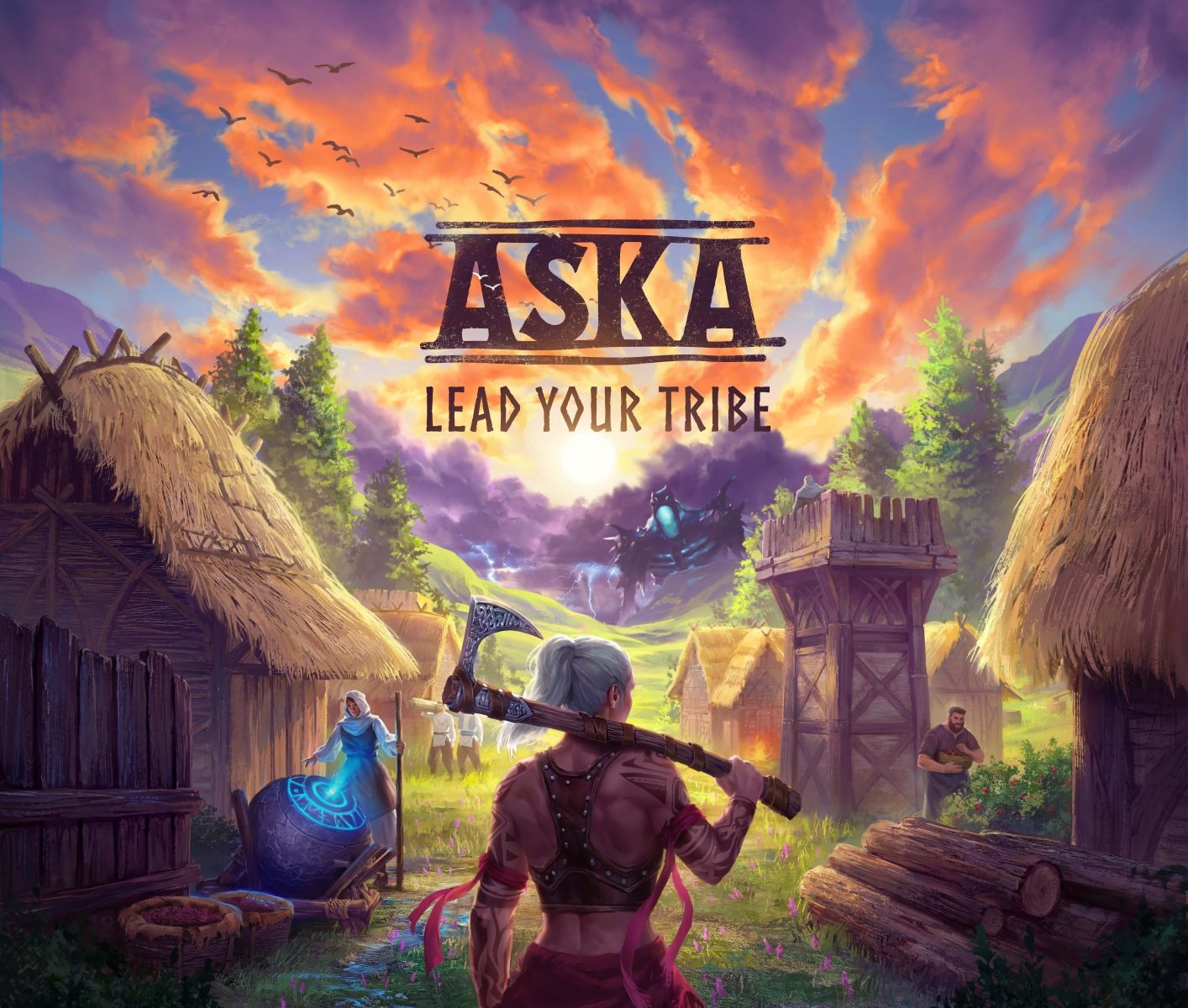ASKA is a third-person “survival tribe builder” in which you establish, manage, and defend a Viking settlement that evolves into a self-sustaining society. Developed by Bucharest-based Sand Sailor Studio (creators of Black The Fall) and published by Thunderful, the game blends colony-sim management with open-world survival and co-op adventuring. You can play solo or with up to three friends (four players total), sharing a base and responsibilities while contending with hunger, weather, and supernatural threats.
The project launched into Early Access on June 20, 2024, with Sand Sailor positioning the EA build as a “solid alpha” that already supports the core loop—crafting, villager management, base building, boss hunts, seasons—while a broader content roadmap leads to full release. Thunderful lists the title on PC (Steam), with age ratings from PEGI 16 to ESRB Teen, and notes ongoing iteration during Early Access.
Core Loop: Build, Lead, Survive
Moment-to-moment play centers on designing and expanding a functioning settlement: placing homes, workshops, altars, fortifications, and the infrastructure that ties them together. Every building is purposeful—production chains, defense points, storage, or villager morale—so layouts matter for efficiency and survival. The game’s design pushes you to think like a headman/woman and city planner rather than a lone survivalist.
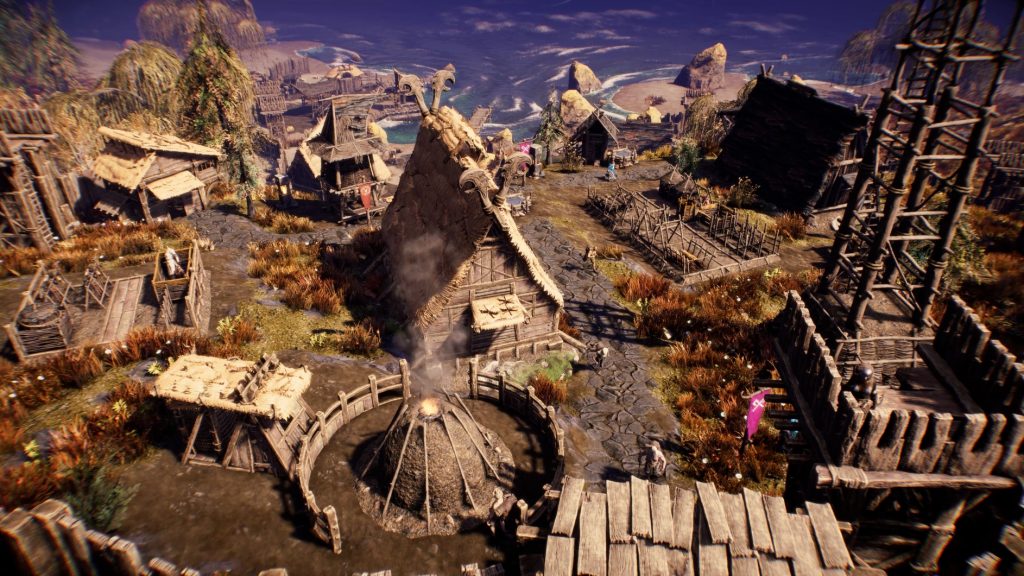
Survival pressures escalate as your village grows. Food and water logistics, crafting throughput, and defensive readiness become interdependent problems. Planning for seasonal scarcity and periodic crises (like Blood Moon attacks) means stockpiling, training, and assigning redundancies to critical jobs so that one injured hunter or missing blacksmith doesn’t cascade into collapse.
Villagers as Systems: Schedules, Perks, and Roles
ASKA’s signature twist is its AI-driven populace. Villagers maintain daily schedules, need food, rest, and warmth, and come with individual perks that shape aptitude. You’ll recruit newcomers, then specialize and train them—e.g., turning a promising forager into a hunter, or leveling a crafter toward blacksmithing to accelerate tool and weapon output. This transforms “NPCs” into a living workforce whose welfare directly sets your colony’s ceiling.
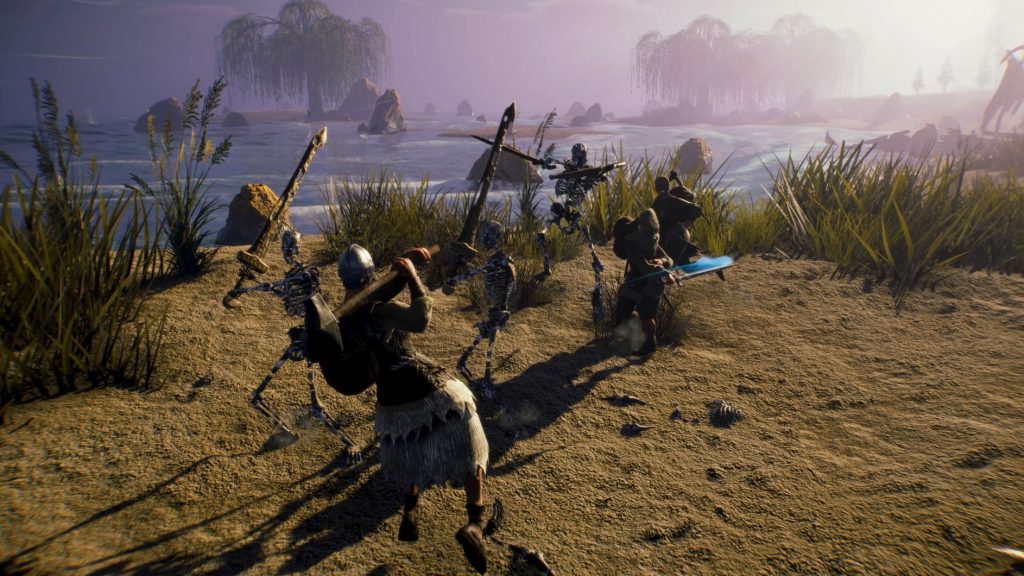
Leadership decisions play out over days and seasons. Assigning guard rotations, optimizing production lines, and sequencing construction queues (roads → houses → workshops → palisades) determines whether your tribe thrives. Fail to coordinate, and you’ll discover exactly how brittle an under-staffed, over-expanded frontier village can be.
A Procedural World with Seasons and Weather
Exploration unfolds across procedurally generated islands filled with hidden caves, landmarks, and resource pockets. Prospecting trips are risk/reward exercises: push deeper for rare ores and runestones, or cut your losses to get harvests home before nightfall or a storm front moves in. The world’s layout, biomes, and points of interest shift each run, encouraging new settlement patterns and scouting paths.
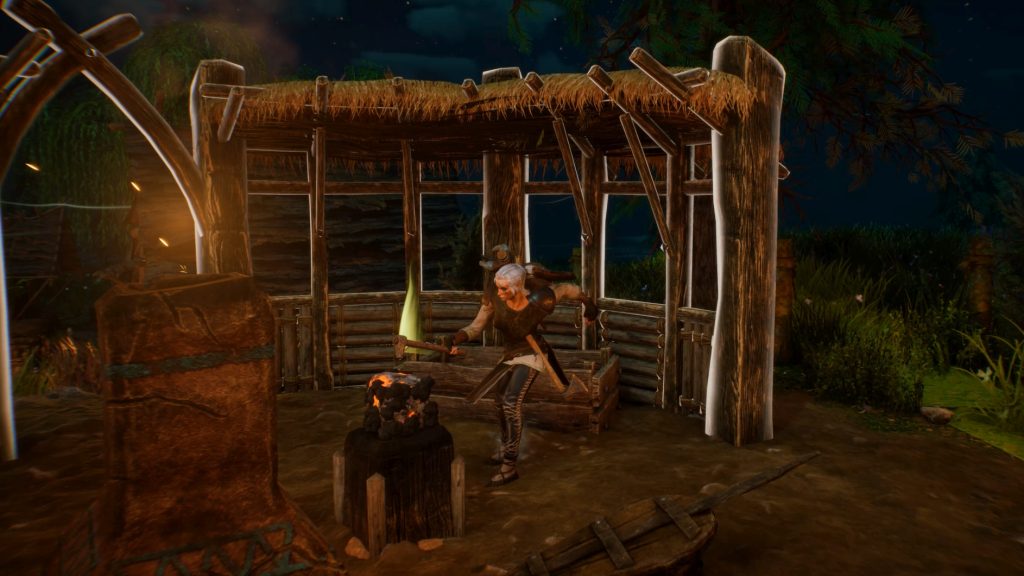
Seasons and a dynamic weather system refocus priorities: spring planting and stock rebuilding, summer expansion and hunting, autumn prep, and winters that stress heating, clothing, and preserved food. Mechanical friction—frozen farms, reduced foraging, harsher storms—forces you to engineer redundancies and buffer stocks long before the snow falls.
Combat and Mythic Threats
Combat is real-time and positioning-driven, with an emphasis on preparation and composition. Out in the wilds, you’ll encounter predators and hostile entities; on event days, the Blood Moon can bring concentrated assaults that test walls, watchtowers, and your militia’s training. Villager skill tracks matter: trained fighters survive sorties longer and hold lines more effectively, while your gear tier determines the margin for error.
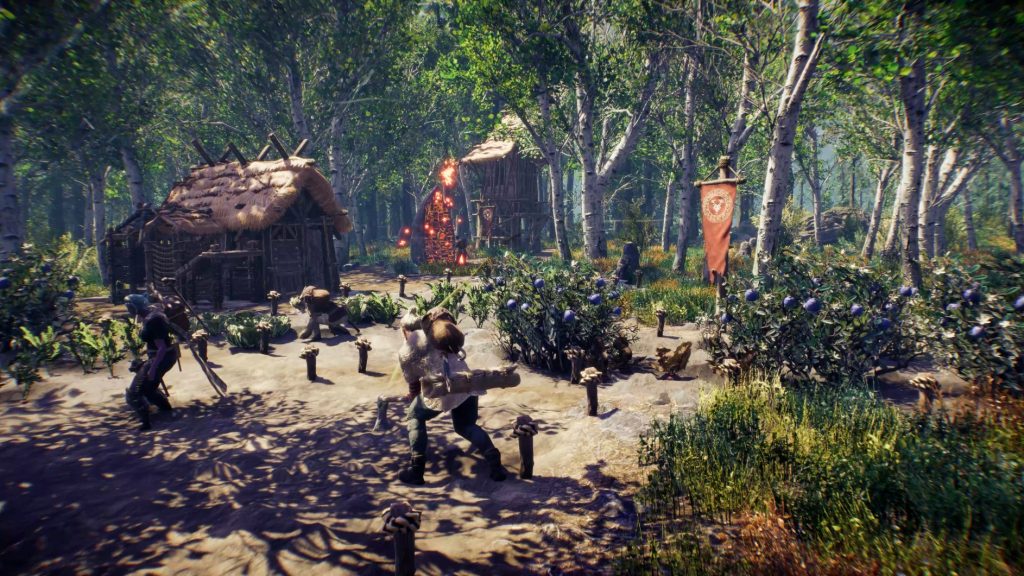
Mythic flavor colors the sandbox. Runestone systems and legendary creatures add progression beyond iron-age tech—letting you tune your tribe and leader for specific challenges. Instead of simple DPS races, the best defenses are multi-layered setups with kill zones, patrol routes, and supply depots to keep defenders armed and fed.
Four-Player Co-op: Shared Labor, Shared Glory
Co-op isn’t a side mode—it’s foundational. With up to four players, the tribe can run synchronized expeditions (scout team, hunting party, mining crew) while the “home crew” keeps kilns firing and meals flowing. This reduces bottlenecks and allows real specialization: one player coordinates logistics, another leads combat training, a third oversees farming.
The social design shines during spikes—raids, winter shortages, boss hunts—when coordination and timely role-swapping rescue failing plans. ASKA’s pacing rewards groups who plan daily agendas and communicate about inventories, tool wear, and risk thresholds before setting out.
Building and Crafting: From Shacks to Strongholds
Construction ranges from basic shelters to layered fortifications and purpose-built workshops. Furniture and decor matter beyond aesthetics: you can personalize spaces with functional items and dyes, increasing efficiency or morale. Thoughtful town planning—short paths between raw resources, refineries, and output bins—saves villager hours and prevents production stalls.
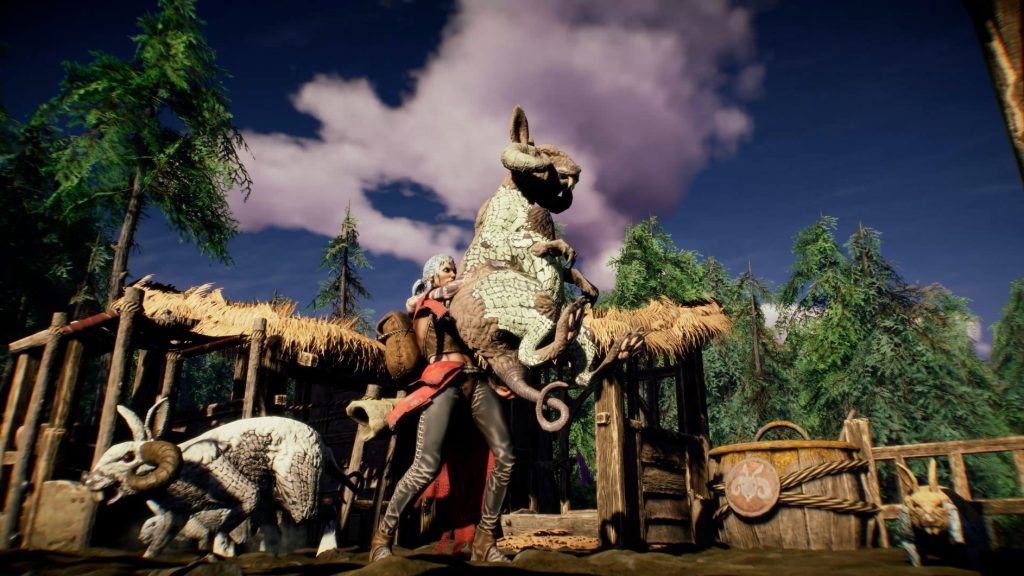
Crafting ladders up through tools, weapons, clothing, and building materials. Because villager throughput is finite, you’re incentivized to identify and clear chokepoints: promote an apprentice, add workbenches, or reorganize the workday to minimize idle time. The difference between a scrappy outpost and a humming proto-city is often your queue hygiene.
Sailing and Multi-Island Logistics
Beyond hoofing it, ASKA supports boats and long-ship progression. Once unlocked, you can fish from boats and reach smaller satellite isles for resources and points of interest. The team has discussed expanding maritime content—raids, additional islands, and broader reasons to sail—over the Early Access period, signaling a future where sea lanes and outposts form the backbone of a Norse trade-and-war economy.
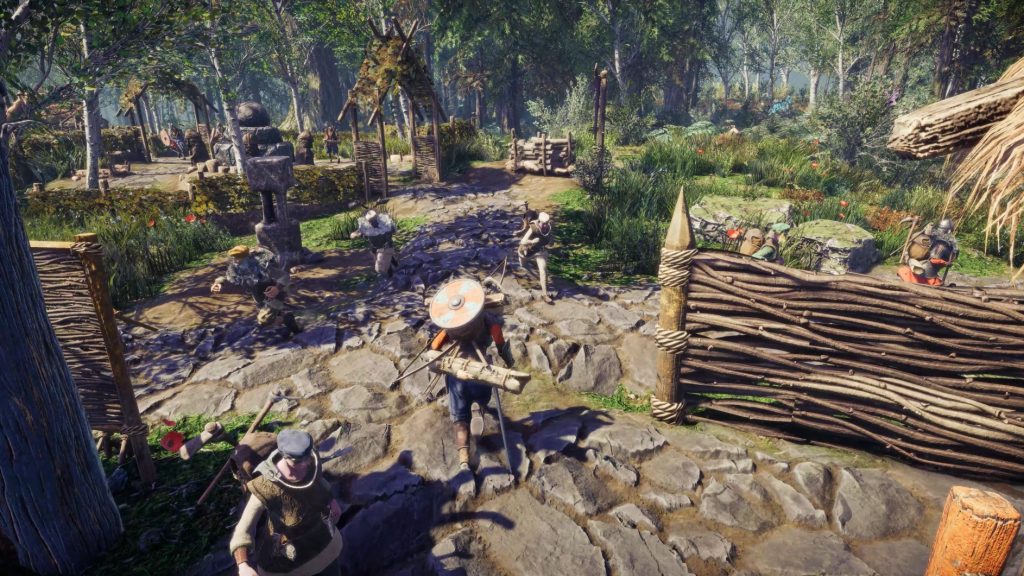
In practical terms, water opens a second logistics axis. Even in the current EA builds, boats enable safer fishing and alternative routes around land hazards. As content grows, expect supply lines, resource ferries, and multi-settlement planning to become endgame colony-sim puzzles as important as your main keep.
Early Access State, Roadmap, and Community
Sand Sailor describes the EA version as stable but performance-sensitive at large colony scales—a frank nod to simulation density. The studio plans multiple major content updates before 1.0, and has been active in community forums about carrying unfinished 2024 roadmap items forward into 2025. Pricing is slated to increase at full launch, proportional to content added during Early Access.
Thunderful’s announcement messaging and press previews underline a feedback-driven cadence: closed tests, open discussion boards, and regular patch notes. That community loop already yielded updates like deeper role systems and biome work, with more exploration and late-game objectives on the table as the game marches to its planned full release window.
Technical Profile: Engine, Specs, and Performance Notes
ASKA is built with Unity—Unity highlighted the title in its June 2024 “Made with Unity” roundup—an engine choice that suits large simulation graphs and robust toolchains for AI scheduling and authoring. On PC, a modern mid-tier CPU/GPU is recommended: the listed minimum calls for an Intel Core i5-6600/Ryzen 5 1600, 16 GB of RAM, and a GTX 1660 6 GB or RX 590, with about 6 GB of disk space.
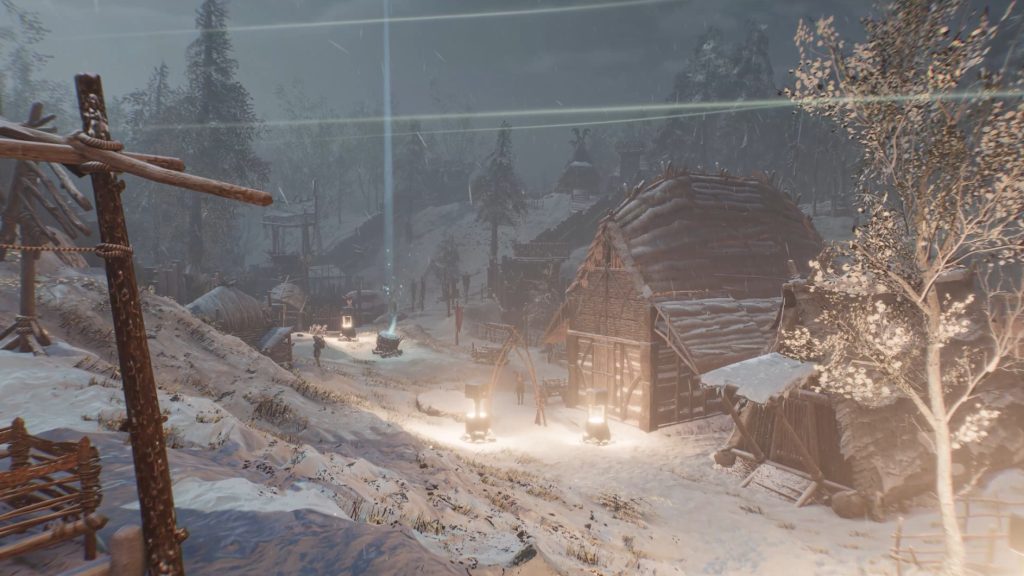
As with many colony sims, performance hinges on entity count, pathing complexity, and job-queue churn. The developers explicitly warn that requirements rise as your settlement scales—so smart town planning (shorter routes, fewer choke points) is as much an optimization strategy as it is a role-play choice. Community impressions since launch have echoed this: good playability overall, with heavier loads in late-game towns.
Accessibility, Languages, and Ratings
ASKA supports a broad set of interface/audio/subtitle languages on Steam (including English, German, French, Spanish, Japanese, Polish, Portuguese-BR, Russian, Simplified/Traditional Chinese, Ukrainian, Romanian, and Italian), widening its co-op reach. Thunderful lists age ratings as ESRB Teen, PEGI 16, USK 12+, and IARC 16+.
The UI leans on clear job assignment and alerting; even so, colony-sim newcomers will benefit from pacing themselves—building small, readable production loops before scaling—and using co-op to share cognitive load. The game’s EA state also means QoL passes are ongoing as player feedback identifies friction.
Studio and Publisher Context
Sand Sailor Studio is a small, veteran indie team whose previous work (Black The Fall) emphasized atmosphere and systemic clarity; in ASKA, that DNA shows up as legible, tactile building and readable AI behavior. Thunderful, meanwhile, brings production support and community pipelines that help a ten-person studio sustain regular updates across a live Early Access cycle.
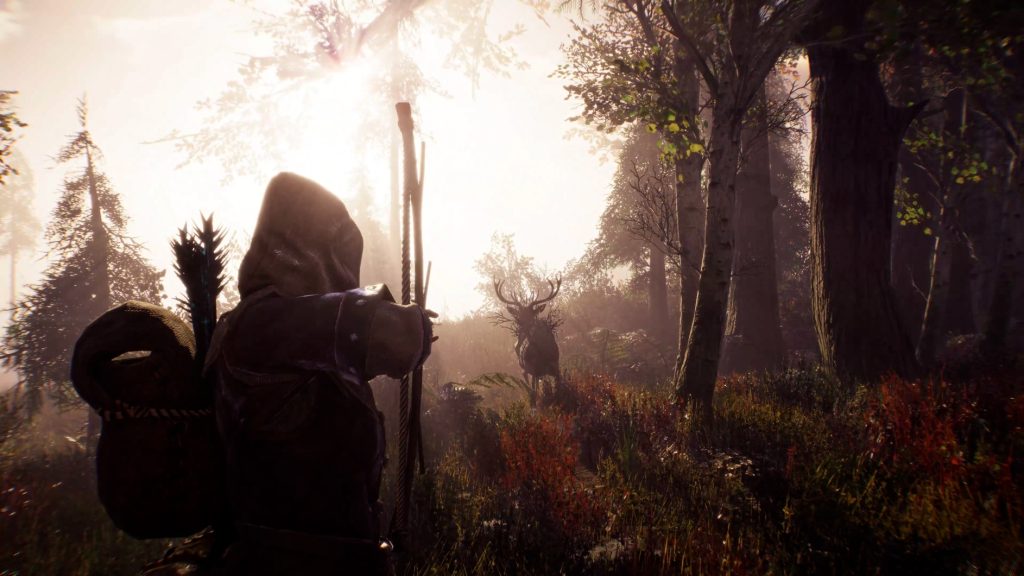
This pairing—tight, creatively focused developer plus a publishing partner versed in live operations—positions ASKA to iterate rapidly on features like maritime content and late-game village systems while keeping an eye on stability and onboarding.
Bottom Line
ASKA’s pitch is simple but potent: take the tension of survival crafting, overlay it with a true village simulation, and let players lead a people rather than merely gear a hero. In Early Access it’s already compelling—especially in co-op—thanks to villager schedules and perks, seasons that reshape priorities, and a steady drip of mythic danger. The roadmap’s emphasis on exploration and seafaring logistics suggests a future where your Norse society spans multiple islands, tethered by ships, supply lines, and stories. If you like survival sandboxes that ask you to think in systems, not just swords, ASKA is already worth settling into.
Summary: ASKA is a PC (Steam) Viking survival tribe builder from Sand Sailor Studio and publisher Thunderful, in Early Access since June 20, 2024. It mixes base-building, villager management, seasonal survival, and co-op for up to four players, with a roadmap that expands exploration, sailing, and late-game colony complexity on the path to a planned 2025 1.0 launch. System requirements target mid-tier hardware, language support is broad, and the game is built in Unity. If the idea of orchestrating people, not just crafting benches, sparks your imagination, ASKA’s living village is its standout feature.
Disclosure: I received a free review copy of this product from https://www.keymailer.co
